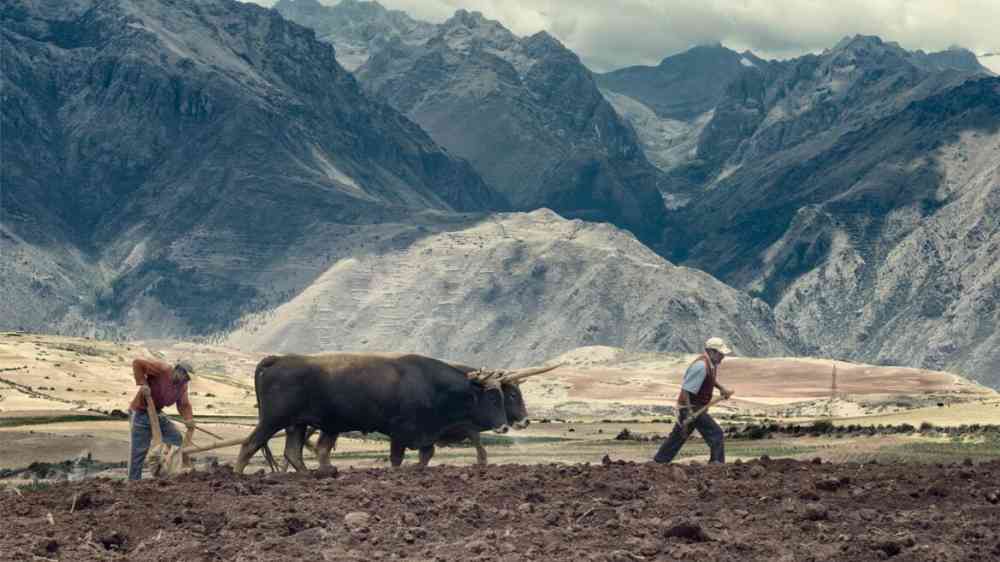
Agriculture is an important part of city life in Arequipa, Peru, a regional capital that has seen its population grow to nearly a million, from just 160,000 in 1960. People are drawn to the city by financial and social opportunities and because of internal conflict that particularly has affected Peru’s rural communities.
Water is supplied to urban farms via a pre-Incan canal network, which distributes water from the Chili River. But as the city has expanded into surrounding rural areas, many farmers are choosing to sell their land to developers.
Researchers note that as smallholder farmers sell their land, traditional agricultural knowledge may be lost, although the region’s growing population means that agriculture itself is expanding into previously arid regions. “There is a real danger that Traditional Knowledge, such as crop rotation and drought adaptation, will be lost and the city will be less resilient,” said Abigail Tomasek, a geoengineer at Oregon State University in Corvallis. Tomasek will present findings from her research on 14 December at AGU’s Fall Meeting 2021 in New Orleans.
Historically, Arequipeños have grown a variety of crops, including potatoes, broccoli, and alfalfa. In recent years, market forces have driven city farms to focus on monoculture crops such as onions and garlic, which are more profitable but also prone to price crashes and sometimes are more dependent on irrigation. Currently, there is a drive to grow avocados in Arequipa, for instance, which require significant amounts of water to cultivate.
Tomasek is part of a research project, supported by the Arequipa Nexus Institute, investigating water disparities in the Arequipa region. She is particularly concerned about plans to build a new hydroelectric plant in the city’s northern outskirts that will flood historic farmland. As a result of the dam, water for Arequipa’s city farms would be pumped rather than fed by gravity—leaving farmers more exposed to supply issues.
Environmentalists are also concerned about what effect the continued expansion of the Cerro Verde open-pit copper mine, 32 kilometers southwest of Arequipa, might have on the region’s water supply. Mine officials said that wastewater is treated to ensure that heavy metals (such as copper, arsenic, and cadmium) don’t pollute local water networks.
Flooding the Desert
Meanwhile, just 88 kilometers west of the city of Arequipa (but still in the Department of Arequipa) is the Majes District, a newer settlement facing its own water stress. Peruvians began moving to this arid area after the Majes-Siguas irrigation project was established in 1983. The project transfers water from the Colca River in the Andean Highlands to the Atacama Desert below, creating a fertile area of roughly 23,000 hectares. In the early days of the project, plots of land (5 hectares each) were sold cheaply through a lottery system.
Majes is officially home to more than 60,000 people, although some estimates put its population as high as 120,000. The year-round water supply ensured by the Majes-Siguas project attracts migrant farmers and farmworkers who previously had limited growing seasons. Many of these farmers hail from Andean Highland communities that historically relied on seasonal meltwaters from glaciers, which are now retreating because of climate change. Many landowners in the region hail from Arequipa and hire farmworkers from Peru’s highlands and other cities such as Puno.
“Multiple factors drive people to live in a place like Majes where there is work, where there are better schools. Climate is definitely a factor, but it’s not the only one,” said Anna Erwin, a social scientist from Purdue University in Indiana who in 2022 will begin a new post at the University of Texas Rio Grande Valley.
To prepare for dry periods, registered landowners store water in reservoirs and take other measures agreed to through an irrigation commission. Migrant farmworkers usually do not have a voice in these commissions; legally, they cannot access water from the irrigation project.
Erwin interviewed migrant farmworkers and a range of other actors in Majes in 2019 as part of the same research project as Tomasek. This December, Erwin returned to Majes for a follow-up study, funded by Purdue’s Clifford B. Kinley Trust, that also considered the effects of the COVID-19 pandemic on the migrant farming community. She will discuss this work at AGU’s Fall Meeting 2021 on 16 December.
“When there is no water, the harvest dries out, everything [dries out], and there is nothing to drink,” one migrant farmworker (who preferred to remain anonymous) told Erwin during her research. If water cuts out for even a couple of days, flowering crops like potatoes and peppers can die, and pests can thrive.
In these circumstances, migrant farmworkers are often forced to buy water at exorbitant prices. Some resort to stealing water from the irrigation system, which leads to landowners blaming migrants for reductions in the water flow supplying their farms.
Majes-Siguas II
There are now plans for a public-private partnership to create an additional 38,500-hectare irrigation zone dubbed Majes-Siguas II. Individual plots will be significantly bigger than in Majes-Siguas I, so it will likely attract bigger business.
In an upcoming research paper, Erwin and coresearchers describe how migrant communities currently self-organize to pool water resources and obtain electricity supplies. The team recommends that these farmers should be included in existing water organizations to strengthen resilience.
Jorge Delgado Ochoa, a psychologist and sustainable development consultant based in Cusco, said baseline water use studies (such as those from Tomasek and Erwin) can inform interventions to support Peru’s rural communities. “Peru is famous for its geographical diversity and resources, so it is relevant to find a middle point to keep traditions but also keep mining operations and electricity generation,” he said.